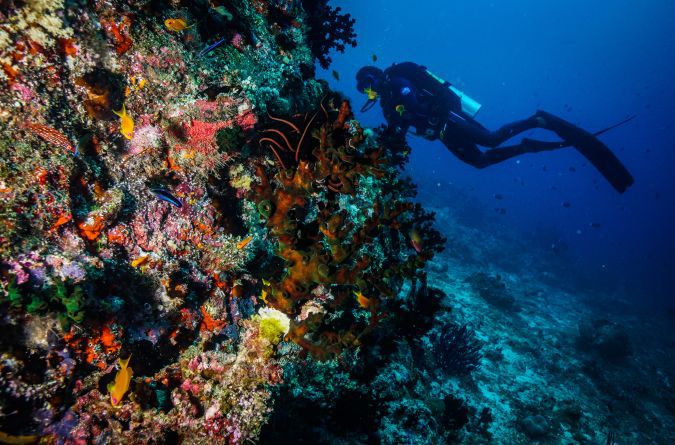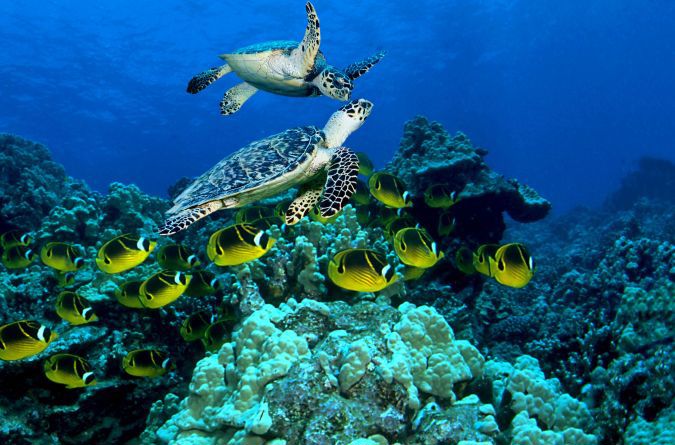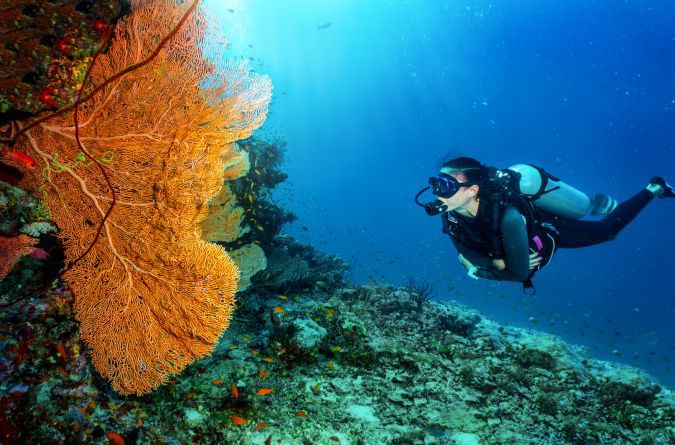Diving and Snorkeling
Although the Maldives are known for the stunning beaches and azure waters that typify the tropical idyll, its life beneath the water’s surface which is becoming ever more respected by scuba divers in the know. The Maldives islands have some good coral reefs, but it’s the abundance of marine life throughout the country that sets it apart from other dive destinations. The water temperatures remain 27 to 28 degrees Celsius throughout the year.
Diving and Snorkeling Seasons
There are two main seasons
Diving & Snorkeling Information
May - October (The Southwest Season)
The Southwest Monsoon, also known as the "Hulhangu" season in the Maldives, typically begins in May and continues through September. If you're explaining this to divers, here’s a clear and concise way to do it:
Southwest Monsoon Overview
Timing:
The Southwest Monsoon starts around late May and peaks in June, continuing until September.
Weather Conditions:
During this period, the weather becomes more unpredictable. You can expect stronger winds, higher humidity, and occasional rain showers. However, the weather isn’t consistently stormy; there are plenty of days with good diving conditions.
Sea Conditions:
The seas can be rougher compared to the calm conditions during the Northeast Monsoon. Waves and currents tend to be stronger, especially on the western side of the atolls.
Impact on Diving
• Visibility: The visibility underwater might reduce slightly due to the plankton-rich waters. However, this also attracts large pelagic species, like manta rays and whale sharks, making it an excellent time for big fish encounters.
• Marine Life: The increased nutrients in the water support a thriving marine ecosystem. Divers often have the chance to see manta rays in cleaning stations and whale sharks feeding in certain areas.
• Dive Sites: Many dive sites are still accessible, but the choice of sites might be influenced by the current conditions. Dive operators often choose sites on the eastern side of the atolls during this period, where the conditions are generally calmer.
Considerations for Divers
• Experience Level: While diving during the Southwest Monsoon can be thrilling, it's best suited for divers with at least moderate experience due to stronger currents.
• Equipment: Make sure to use surface markers and dive with a guide who understands the local conditions well.
Summary
The Southwest Monsoon in the Maldives is a dynamic time for diving. While conditions are more challenging, the rewards include the chance to see incredible marine life up close, especially manta rays and whale sharks. As long as you're prepared and diving with a knowledgeable guide, it can be an unforgettable experience.
November - April (The NorthEast Season)
The Northeast Monsoon, also known as the "Iruvai" season in the Maldives, typically begins in November and lasts until April. This period is highly favored for diving, and here’s how you can explain it to divers:
Northeast Monsoon Overview
Timing:
The Northeast Monsoon starts around November and peaks from January to March, continuing until April.
Weather Conditions:
The weather is generally dry, sunny, and calm during this period. There’s little rainfall, clear skies, and the seas are relatively calm, making it a perfect time for diving.
Sea Conditions:
The eastern side of the atolls experiences strong currents, while the western side generally has gentler conditions. This season brings clear water and better visibility, especially on the eastern side.
Impact on Diving
• Visibility: The water is usually crystal clear during the Northeast Monsoon, with visibility often exceeding 30 meters (100 feet). This is perfect for divers who want to experience vibrant coral reefs and observe marine life from a distance.
• Marine Life: The monsoon brings in nutrient-rich water on the eastern side, attracting plenty of smaller reef fish and large pelagic species like sharks. Manta rays and whale sharks are more commonly seen on the western side of the atolls during this season.
• Dive Sites: The most popular dive sites are found on the eastern side of the atolls, where currents bring in clear water and abundant marine life. Channels and reef edges are especially popular due to the high visibility and excellent opportunities to see sharks, barracudas, and schooling fish.
Considerations for Divers
• Experience Level: The calm seas and clear conditions make this a great time for divers of all experience levels. However, for those interested in strong currents and drift dives, the eastern atolls offer thrilling conditions.
• Marine Encounters: During the Northeast Monsoon, manta ray sightings tend to be more frequent on the western side of the atolls. For divers specifically looking to see big pelagic life like sharks, the eastern side is ideal.
Summary
The Northeast Monsoon in the Maldives is widely considered the best time for diving. The calm conditions, excellent visibility, and thriving marine life create the perfect backdrop for divers of all levels. Whether you’re exploring coral reefs or enjoying drift dives in channels, this season offers some of the best diving experiences the Maldives has to offer



All of our vessels are accompanied by spacious diving dhonis (tenders) which are equipped with the latest to meet the ever growing demands of the divers today. The dhonis have Nitrox membrane systems providing 32%, a toilet, hot water shower, fresh water showers and camera rinsing tank.
The Carpe Diem, the Carpe Novo and the Carpe Vita provide as standard 3 dives per day.
Snorkelers are welcome too, apart from some dedicated snorkel trips, the boats all have a small speed boat (dingy) available for snorkelers to go snorkeling with our crew when the divers are out diving. For private charters, itineraries and activities can be tailor m
We’ve created the below to assist first time scuba travelers to the Maldives in planning their adventure. Not every itinerary, or every dive site, or every price range is for everyone. Take the time to make the right choice by minimizing surprises and maximizing your total dive holiday experience! There are two distinct diving seasons in the Maldives. Choosing which season is right for you can be a very important decision. Within each season, there are factors that should affect your decision. What are these factors?
A note about the two seasons: Maldives diving is year round. Each season brings the opportunity to see the same creatures, BIG and small. What makes the seasons different are the conditions. Of interest: the Maldives waters support the world’s largest known population of reef manta rays all year round. Whale sharks can be seen all year round as well, which are two bucket list creatures of every scuba diver. Read more in the next section (below).
